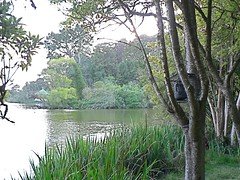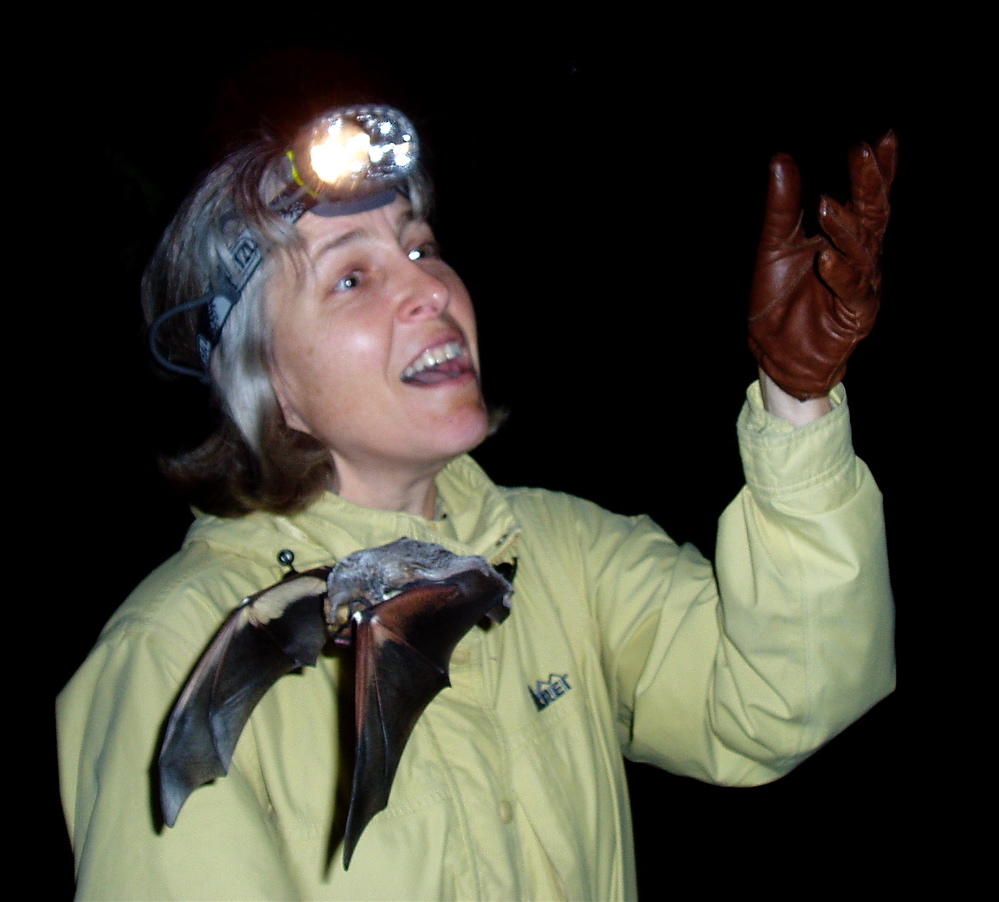
After much hard work, I finally managed to complete my master's degree at San Francisco State University this summer. At this point, I know more about the bats that live in San Francisco than anyone else in the world.
If you've had the patience to follow along you will know that my study involved
an acoustic survey of the bats that live here in the city, to understand what factors affect their foraging for insects. Here's what I learned. There are at least four species of bats in the city. By far (84%) most of them are Brazilian Freetailed bats (
Tadarida brasiliensis ). Parks that have water in them also tended to have Yuma Myotis bats (
Myotis yumanensis ). The two other bats I found were Western Red bat (
Lasiurus blossevillii) and Little Brown bat
(Myotis lucifugus). Bats are present and active all year in the city, with the highest activity levels in the fall. I found Freetailed bats in every place I looked,
even in back yards. This is probably because they tend to fly high and forage over large distances, and their loud calls are easy to pick up on a recording. Yuma bats are known for hanging out near water, so it wasn't a surprise to find them near lakes and streams. However, they were not at all the lakes: I didn't find them at
my recording location in Golden Gate park, at Stowe lake. Red bats migrate through in spring and fall but are known to over-winter in the arboretum in Golden Gate park. Little browns are the bat apparently most affected by
white nose syndrome in the eastern US. They are really widespread and common, but I only found them in two locations:
Pine Lake and the
Fire Department's reservoir at the top of Twin Peaks.
The highest diversity of bat species were at those two locations. This is interesting because these are not large bodies of water, nor are they in large parks. Pine Lake, shown here, is in a medium-sized park with heavy recreational use. I considered five potential factors to explain this: park size, amount of tree edge in each park (where bugs like to hang out), distance to the nearest large park, distance to the nearest fresh water, and amount of native plants in each park. I used statistical modeling to understand what variables best explain the difference in number of species, as well as the difference in activity between the parks. The best explanation for the number of species was the distance to the nearest water.
One interesting thing I didn't find was Big Brown bats (
Eptesicus fuscus ). These are very common and widespread, especially in urban areas. I am not sure why I didn't find any in San Francisco, as they've been found in nearby areas.
You can read more about the results of my research in
the published article (pdf download). If you have questions about it please send me an email at jennifer at krauel dot com.







